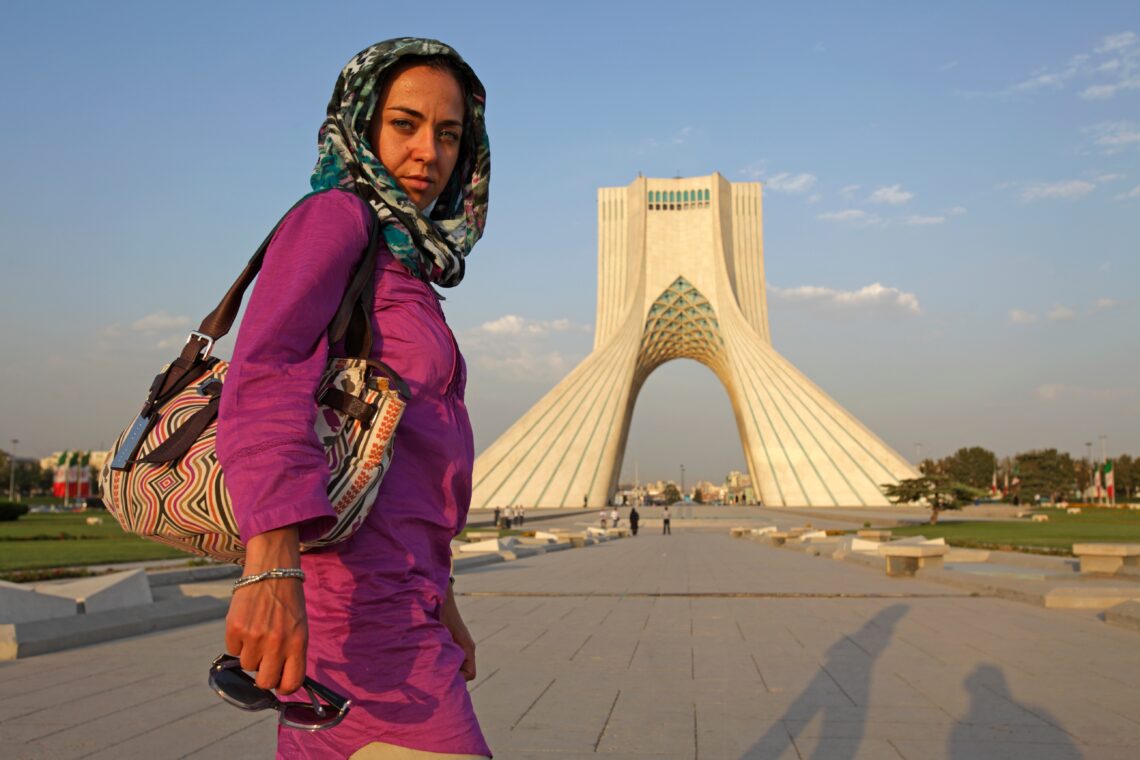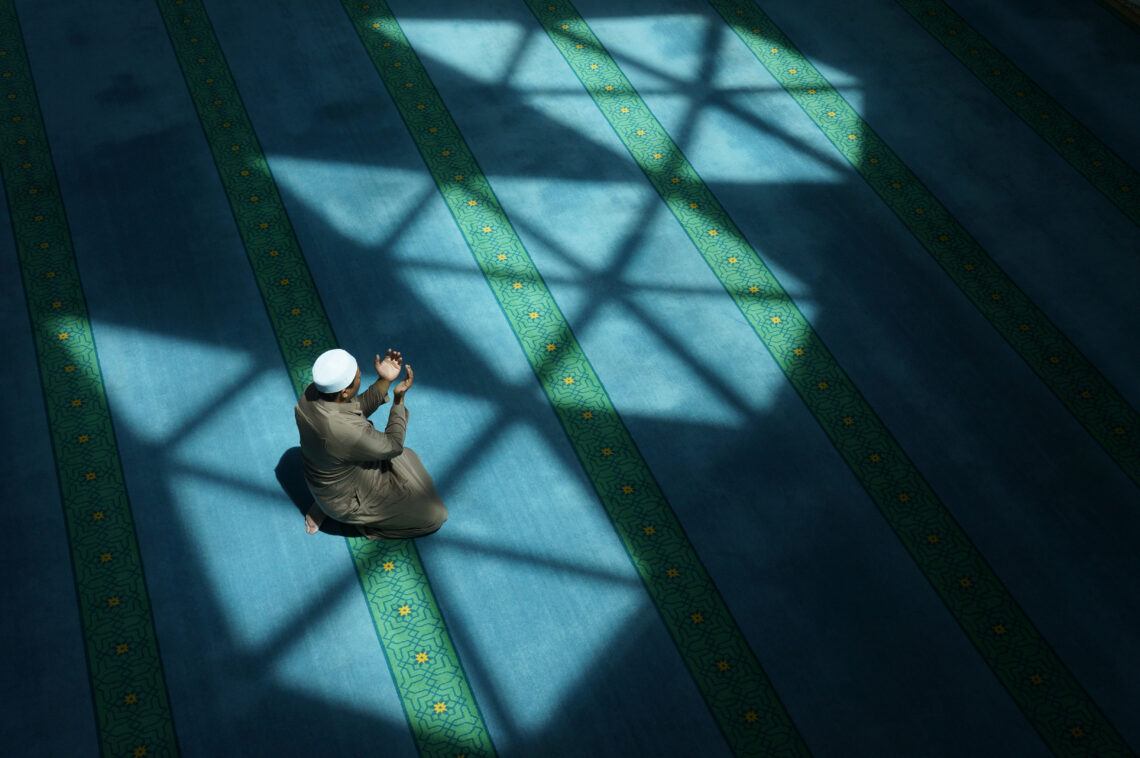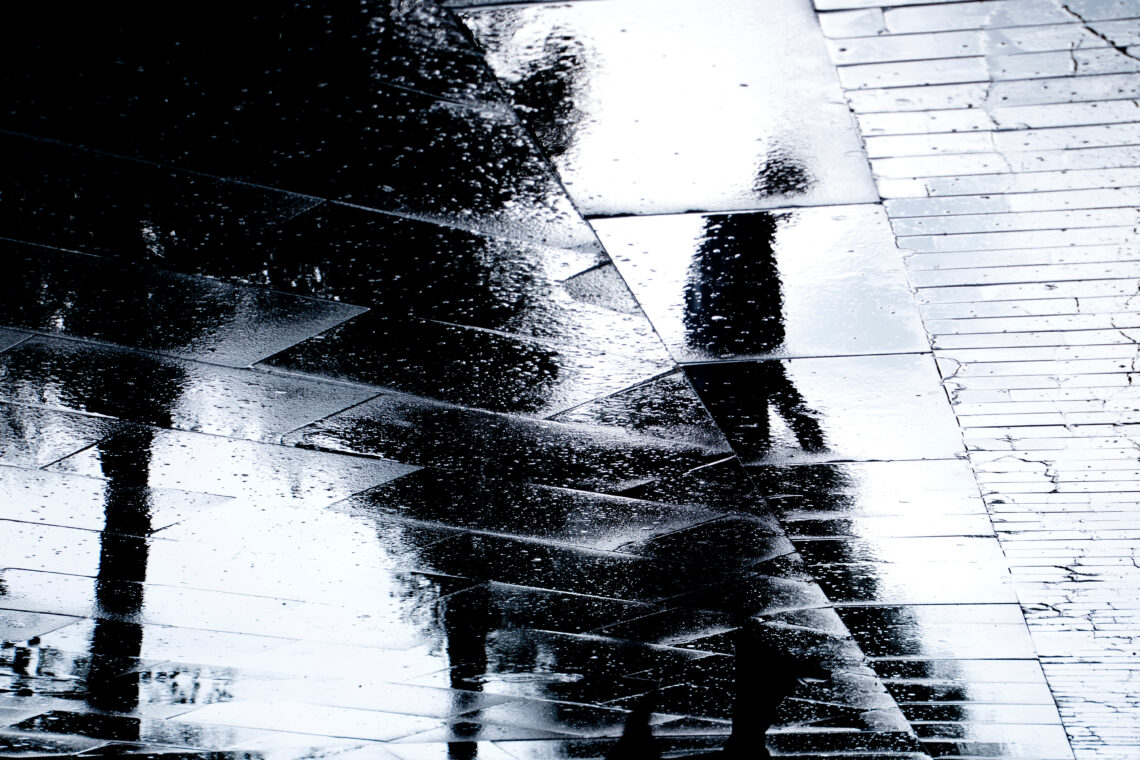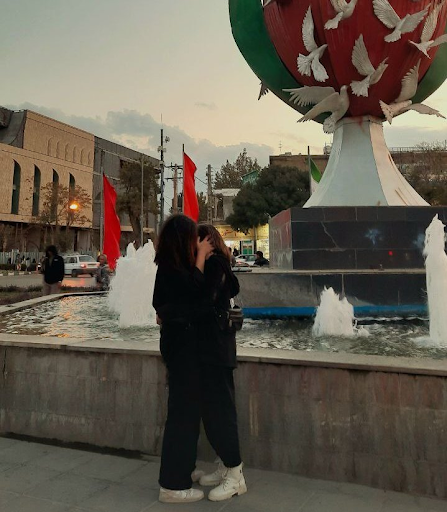Muhammad often tells his conservative parents he’s going out to smoke and take a walk. While they are not happy about his smoking habits, they are much more accepting of their son inhaling nicotine than what he really does.
If they discovered his secret, “they would kill me by their own hands,” Muhammad told LGBTQ Nation. Among his family members, Muhammad is mostly afraid of his father, a judge at an Islamic court.
“My father was responsible for the deaths of many who were probably gay, bisexual, or of any LGBTQ family members. I do not wish to find out what would happen to me if he knew I was gay.”
Muhammad’s “smoke break” story is an excuse many men in Tehran use to meet up with their same-sex partners at night. He usually goes to Al-Mahdi Park to meet up with someone he has met online.
Never Miss a Beat
Subscribe to our newsletter to stay ahead of the latest LGBTQ+ political news and insights.
Muhammad and his parents live in Tarasht, a conservative neighborhood next to the Azadi Tower. When you enter Tehran, the capital city of Iran, you will see the unique-looking building. The last king of Iran commissioned it to celebrate its 2,500-year history in the name of freedom. Azadi means freedom in Persian. Despite numerous attempts at creating wondrous buildings, no other modern structure in Iran has captured the public’s imagination like the Azadi Tower.
“They would kill me by their own hands.”
Iran is not known for freedom, and for thousands of years, it has been subjected to massacres, genocides, colonial projects, and many authoritarian regimes. So, it’s pretty ironic that the face of its capital is a tower called freedom – something that Iranians have been figuratively and metaphorically dying for.
A few meters from Azadi Tower is Muhammad’s neighborhood, Tarasht. It has a long history that stretches back to pre-Islamic Persia. Before Tehran’s existence, Tarasht was a prosperous village known for its flourishing gardens and picturesque scenery. The founder of the Seljuk empire picked Tarasht as his last residence before leaving this world.
Qajar kings made Tehran the capital of Iran, and Tarasht became nothing more than a simple village connected to the country’s most prominent city. It wasn’t until the Sharif University of Technology’s construction during the 60s that the neighborhood was again given the attention it deserved.
The choice to construct the university in Tarasht seemed slightly incongruent for an area acclaimed by mullahs as one of the most religious areas of Iran. This juxtaposition defines Tarasht’s identity to this day. During the 1979 revolution, universities became a haven for intellectuals and left-wing activists under the oppressive rule of the last king of Iran.

Although Sharif University is arguably the most prestigious university in Iran, Tarasht’s religious identity seems much stronger than the intellectual influence of the university.
Tarasht, with its countless Islamic schools and mosques, became a base for the Islamic right-wing faction of the revolutionaries. Among them was Muhammad’s father, an anti-Communist religious intellectual who became a judge in an Islamic court that sentenced many to death.
Some for exactly what his son is doing.
A soldier’s sexual odyssey
Unlike his father and sisters, Muhammad didn’t attend Sharif University. Instead, he was sent by the government to a university in the countryside, where he felt much more liberated to explore his sexuality and learn more about who he was and what he could be.
Following graduation, Muhammad joined the mandatory military service. A young man in his mid-20s, he used the opportunity to investigate his identity much more seriously, as his parents were focused on their newly married daughter and paid little attention to him.
After installing Badoo (a widely used app among Iran’s gay community), a new world opened up to Muhammad. It turned out that Tarasht, a backward, conservative town full of homophobes, was also filled with gay men craving sex.
“Young folks no longer use the traditional hiding spots to find one another.”
Muhammad has numerous stories of meeting up with the most unlikely people in town. “Almost every old conservative man in Tarasht is gay,” he laughed, but only half in jest.
These men, from a very young age, were forced to marry a “good girl” with a “good family” (as Iranian families put it). “They suppressed their sexual identities for years, and now they were seeking the courtship of a young soldier who was also exploring his desires,” Muhammad said.
The notion of honor plays a massive role among Iranians. A disgrace can forever ruin one’s life. As amoral as it may be, considering they’re cheating on their wives, it takes an unimaginable amount of courage for these men to risk their honor to stay in touch with their sexuality. The complicated morality of the situation is interconnected with the persecution of LGBTQ people in Iran and the complexity of the often- oversimplified modern culture .
Of politics and other demons
Most people are aware that LGBTQ people – most notably gay men – are persecuted in Iran. But what is almost always overshadowed in discussions about the oppression of Iranian LGBTQ people is their history, which has been revised and rewritten by Western nationalists and Islamists. Both groups share similar views despite being at odds with each other geopolitically.
Both Western nationalists and Islamists present a simple explanation as to why LGBTQ people are persecuted: the Koran, an unchanging and violent book that condemns homosexuality. That is, they say, why Muslim countries are not tolerant of nonconforming gender identities and sexualities.
However, that cannot be further from the truth. Muslim countries have cultivated many homosexual cultures, literature, and scientific studies through the centuries.

In a remarkable study called Homophobia as a Tool of Statecraft, Katarzyna Korycki and Abouzar Nasirzadeh examined the last 200 years of Iranian history. They demonstrated that the state varied its stance concerning homosexuality in pursuit of different objectives like modernization or consolidation.
Harvard’s Afsaneh Najmabadi has given lectures and published studies on homosexuality in Iran. She has concluded that it was not until the nineteenth century, when Europeans began to visit Iran, that the view of homosexual male relationships became negative. European men claimed the relations between Iranian men were immoral, and this European perspective was widely adopted by Iranian society.
Tarasht’s gay story starts during the twentieth century with the pre-revolution era amid the Iranian state’s shifting attitude towards homosexuality and the Western influence that continues to this day.
A secret place to smoke
The diaries of an American named David Reed detail his endeavors on Pahlavi avenue – a common hook-up spot – and famous parks and bars that were, at the time, considered havens for gay men – especially a park called Daneshjoo. He paints the picture of a colorful Tehran, which is both dangerous and exciting at night. Tarasht, next to Pahlavi avenue, wasn’t the center of Reed’s attention. However, as time went on and the public appearance of gay people became more taboo, small neighborhoods seemed much safer to those who craved same-sex companionship.
An older gay man living in Tarasht who asked to be referred to as Musa is all too familiar with the province’s origin and its hidden secrets. Musa shed light on these changing times that is almost completely forgotten. Muhammad isn’t the only one who has used the “going out for a smoke” trick to get out of the house to find a same-sex partner. Musa told LGBTQ Nation that this tradition has been used since the 80s.
Musa used to hear a lot of rumors about Tarasht back then. The rumors were about soldiers coming to the neighborhood and that some would sleep around with the men in town. After moving to Tarasht, Musa tried his luck and befriended some of the soldiers who spent time there. “I became lucky,” said Musa. One of the soldiers at the time told him that at night, Al-Mahdi Park was a good place for gay men to find each other.

One night, Musa made the typical excuse of going out for a smoke, went to the park, and sat down, waiting for something to happen. After a couple of hours, he thought perhaps he was fooled by the soldier or maybe no one was interested in him. Right when he wanted to go back to his house, a young man sat next to him.
“Do you need a cigarette?” said the young man. “Thank you; I don’t need one,” replied Musa. The boy nodded. After a few minutes, the boy got closer and closer to him. His leg touched Musa’s body. “Do you need a cigarette?” repeated the boy. Musa knew this was his opportunity: “Yes, I would like a cigarette.”
“But I thought you didn’t need one, ” the boy said sarcastically. Now more confident than ever, Musa said, “I lied.”
Musa told tales of his sexual experiences in Tarasht. He met gay men, usually soldiers, in parks and valleys. He even claimed that one of the cinema theatres nearby was almost exclusively used by gay men to find each other at night.
“Imagine a big theatre without guards or anyone else. People are sucking each other off in the dark, and no one cares what’s on the screen. Multiple times revolutionary movies [propaganda movies produced by the state] were on the screen, which is funny.”
When asked if anyone was caught or if the police ever investigated the area, he said, “Not at all.”
Unlike Daneshjoo Park, Tarasht’s secret was never revealed.
Musa continued to say that, unlike today, homosexuality wasn’t a topic that people openly discussed, thought about, or paid much attention to. Even if the police knew about it, it would have been more beneficial to them to simply ignore it.
“Pahlavi Park [now known as Daneshjoo Park] has historically been the most well-known gay area of Tehran, but as far as I know, the police raided there once. Tarasht isn’t even on their radar.”
It’s hard to get legitimate information on the park since most reports are from the conservatives who claim that Daneshjoo Park is the source of chaos and insecurity in the area because of LGBTQ people. Even the more seemingly progressive generation makes reaction videos to certain clips from Daneshjoo Park in which gay people and trans people are having fun. They get views by showing how “immoral” Iran has become.
If we think of Daneshjoo park from the perspective of a well-educated, westernized out gay person, then Tarasht is its closeted brother who is no less gay than Daneshjoo. Still, everyone thinks of him as a religious goody two shoes.
No neighborhood for old men
So, if Tarasht is Tehran’s secret gay neighborhood, why does Musa need to use Badoo?
“To put it plainly, I don’t like men my own age,” he answered, laughing. “Young folks no longer use the traditional hiding spots to find one another.”
He continued to say that with the widespread usage of the internet, young people find each other using appropriate apps and are no longer even aware of the hideouts that were famously used in the past. These days, only older men are choosing the traditional method, and if you are interested in meeting someone a bit younger, you have to get used to your mobile phone.
Tarasht’s mystery as a gay neighborhood stayed concealed for years because it was hiding in plain sight, much like Superman and his secret identity as Clark Kent. Even if someone suspected something, they would brush it off because they would never believe a respectful religious neighborhood could be a haven for gay sex.

Unlike Daneshjoo Park, which has been the target of shame and reaction from the people for years, Tarasht’s secret was never revealed. The neighborhood was so good at hiding its secret that it could have gone forever without anyone noticing.
Over the past few weeks, LGBTQ people and many others have been fighting against the Islamic Republic both in Tarasht and Daneshjoo Park for their rights, hoping to make places like Tarasht unnecessary and the whole country a haven for gay people.
A new tactic of combating the regime’s anti-LGBTQ+ laws is that young gay, lesbian, and bisexual Iranians take pictures of themselves kissing in the public.
Don't forget to share:













